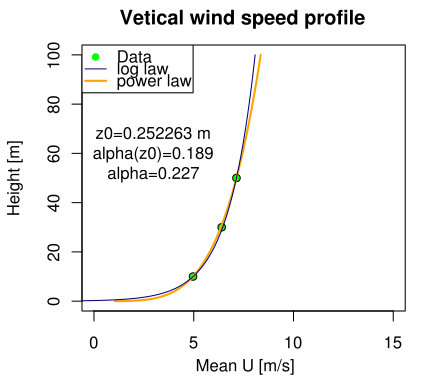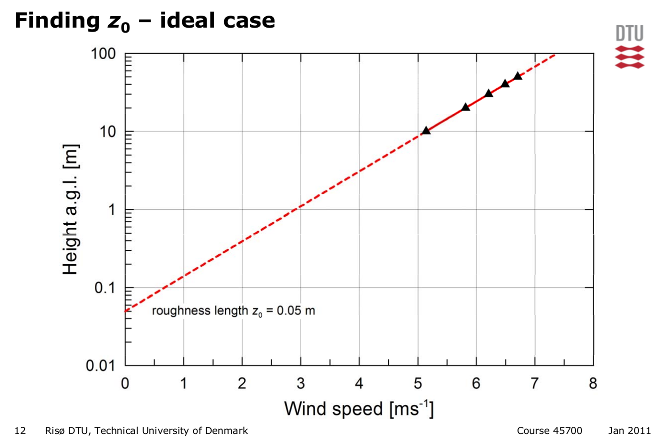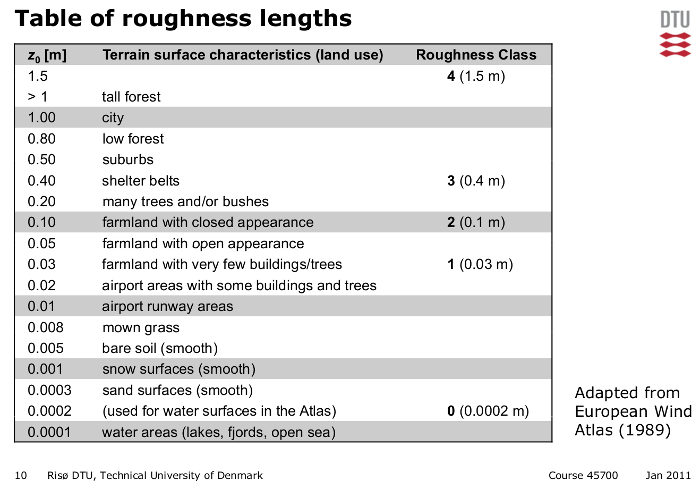Vertical extrapolation is used to calculate the wind speed at a height different (normally higher) than the anemometer. It is recommended [Measnet report – Evaluation of site specific wind conditions ] that the top anemometer is at least at two thirds of the hub height when extrapolating to hub height.
The slope and the shape of the vertical profile is influenced by several factors for example the atmospheric stability, the orography and the roughness of the terrain, and, the roughness changes. The following two relationships can be used to describe the vertical wind profile (on average, assuming flat terrain and constant friction velocity).
Log law:

(4.1)
Power law:
 (4.2)
(4.2)
The coefficients alpha for the power law and z0 for the log law can be calculated from the measurements of at least two anemometers (U1, U2, …Un) at different height (z1, z2, …zn).
Using two anemometers
Having two anemometers alpha can be calculated with equation 4.3.

(4.3)
Similarly, z0 can be calculated as the intercept with the logarithmic ordinate axis of the
line that passes trough (U1, z1) and (U2, z2).

(4.4)
Using more than two anemometers
Having more than two anemometers z0 can be calculated by fitting a straight line to the
points (linear regression) identified with x = Ui and x = log(zi), where Ui is the average
wind speed at height zi. Then, the constant term of the fit is log(z0), from which is easy to
calculate z0.
Similarly, alpha can be calculated from more than two anemometers using a linear regression (forced to intersect the point (0,0)) of the points x = log(Uj/Uk) and y = log(zj/zk) for all the possible combinations of j and k. Then ? is the slope coefficient of the linear regression.
Practical considerations
? can also be calculated from z0 with equation 4.1 at a certain reference height zr;

(4.5)
In which climatic conditions to calculate alpha is a site specific choice. In the real measurements one will see that alpha is very variable with direction, hour of the day and atmospheric conditions.
In general it is a good idea to exclude the low wind speeds (< 3 m/s).
For the vertical extrapolation of a whole time series it is best to calculate alpha for every recorded value of wind speed.
Table of roughness lengths
The roughness length can be calculated from the measurements of at least two anemometers at different height. However, if there is only one wind speed measurement, the terrain surface characteristic of the site can be used to extrapolate that single data-set to a different height.


